jobs reporting requirements - MnSCU Finance
advertisement
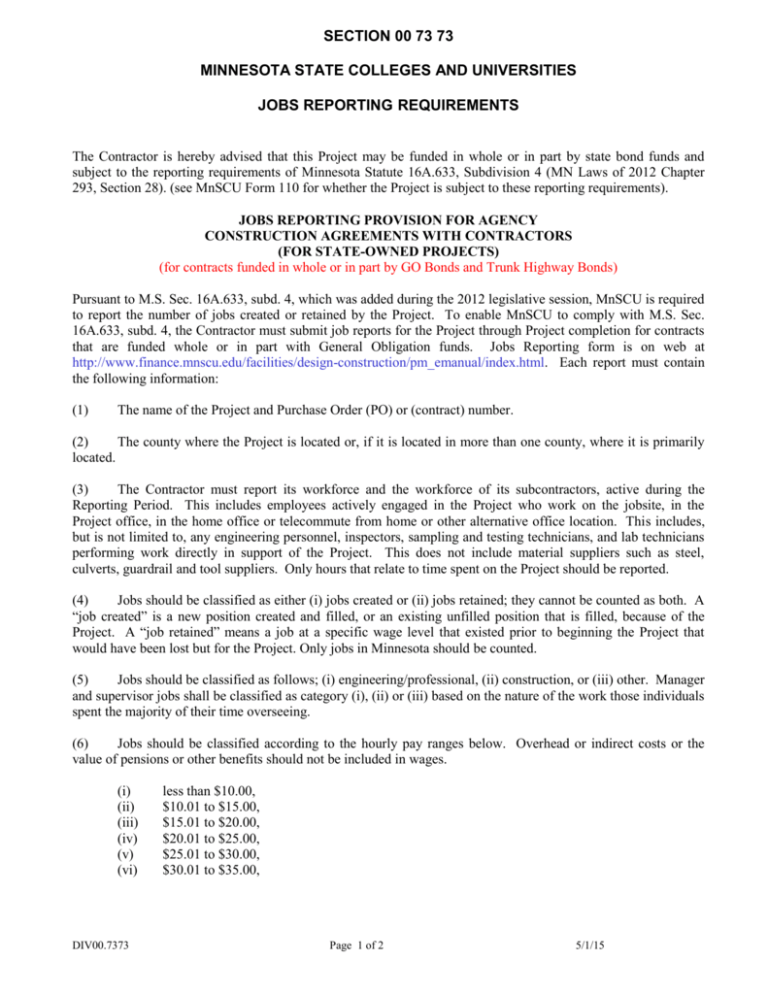
SECTION 00 73 73 MINNESOTA STATE COLLEGES AND UNIVERSITIES JOBS REPORTING REQUIREMENTS The Contractor is hereby advised that this Project may be funded in whole or in part by state bond funds and subject to the reporting requirements of Minnesota Statute 16A.633, Subdivision 4 (MN Laws of 2012 Chapter 293, Section 28). (see MnSCU Form 110 for whether the Project is subject to these reporting requirements). JOBS REPORTING PROVISION FOR AGENCY CONSTRUCTION AGREEMENTS WITH CONTRACTORS (FOR STATE-OWNED PROJECTS) (for contracts funded in whole or in part by GO Bonds and Trunk Highway Bonds) Pursuant to M.S. Sec. 16A.633, subd. 4, which was added during the 2012 legislative session, MnSCU is required to report the number of jobs created or retained by the Project. To enable MnSCU to comply with M.S. Sec. 16A.633, subd. 4, the Contractor must submit job reports for the Project through Project completion for contracts that are funded whole or in part with General Obligation funds. Jobs Reporting form is on web at http://www.finance.mnscu.edu/facilities/design-construction/pm_emanual/index.html. Each report must contain the following information: (1) The name of the Project and Purchase Order (PO) or (contract) number. (2) The county where the Project is located or, if it is located in more than one county, where it is primarily located. (3) The Contractor must report its workforce and the workforce of its subcontractors, active during the Reporting Period. This includes employees actively engaged in the Project who work on the jobsite, in the Project office, in the home office or telecommute from home or other alternative office location. This includes, but is not limited to, any engineering personnel, inspectors, sampling and testing technicians, and lab technicians performing work directly in support of the Project. This does not include material suppliers such as steel, culverts, guardrail and tool suppliers. Only hours that relate to time spent on the Project should be reported. (4) Jobs should be classified as either (i) jobs created or (ii) jobs retained; they cannot be counted as both. A “job created” is a new position created and filled, or an existing unfilled position that is filled, because of the Project. A “job retained” means a job at a specific wage level that existed prior to beginning the Project that would have been lost but for the Project. Only jobs in Minnesota should be counted. (5) Jobs should be classified as follows; (i) engineering/professional, (ii) construction, or (iii) other. Manager and supervisor jobs shall be classified as category (i), (ii) or (iii) based on the nature of the work those individuals spent the majority of their time overseeing. (6) Jobs should be classified according to the hourly pay ranges below. Overhead or indirect costs or the value of pensions or other benefits should not be included in wages. (i) (ii) (iii) (iv) (v) (vi) DIV00.7373 less than $10.00, $10.01 to $15.00, $15.01 to $20.00, $20.01 to $25.00, $25.01 to $30.00, $30.01 to $35.00, Page 1 of 2 5/1/15 SECTION 00 73 73 MINNESOTA STATE COLLEGES AND UNIVERSITIES (vii) (viii) $35.01 to $40.00, or more than $40.00. (7) Jobs should be expressed in “full-time equivalents” (FTE). In calculating an FTE, the number of hours worked through the end of the current Reporting Period should be divided by 2,080 (the number of hours representing full time work for one year period). Jobs should be reported regardless of when the Project or an individual’s employment began or ended. Jobs are to be calculated based on hours worked through the end of the current Reporting Period, and report is cumulative. (8) End of the Reporting Period shall be the same end date as the Pay Application work period. Failure to submit the Jobs Report will result in delay in processing payment until the Report is submitted. (8) Jobs should not be separated into full-time, part-time, temporary, seasonal, etc. Instead, all hours should be totaled and converted into FTEs as indicated above. (9) The Contractor must incorporate these reporting requirements into its contracts with its subcontractors, and impose deadlines on reporting by subcontractors so that contractors will have sufficient time to meet the deadlines for reporting to MnSCU set forth in this article. DIV00.7373 Page 2 of 2 5/1/15
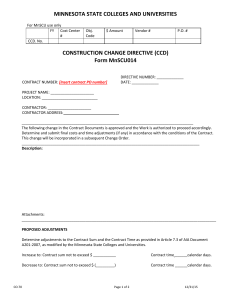
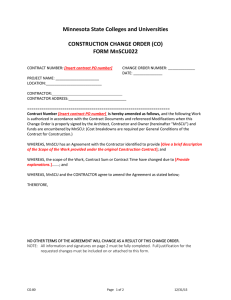
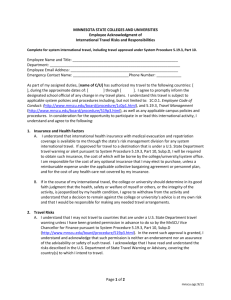

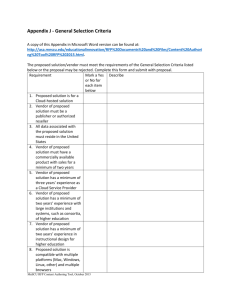

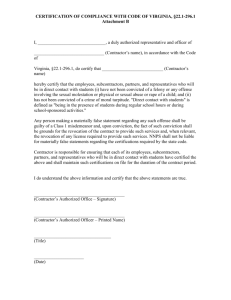

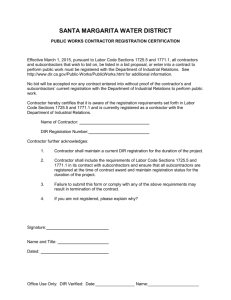
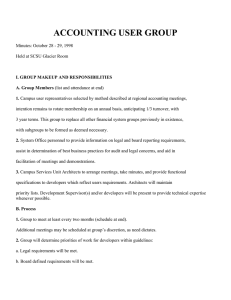

![P.O. Number_________________ FIELD AND DELETE ALL INSTRUCTIONS INCLUDING THE BRACKETS.]](http://s2.studylib.net/store/data/014000214_1-fa999988f798e5354f583809358ddb98-300x300.png)